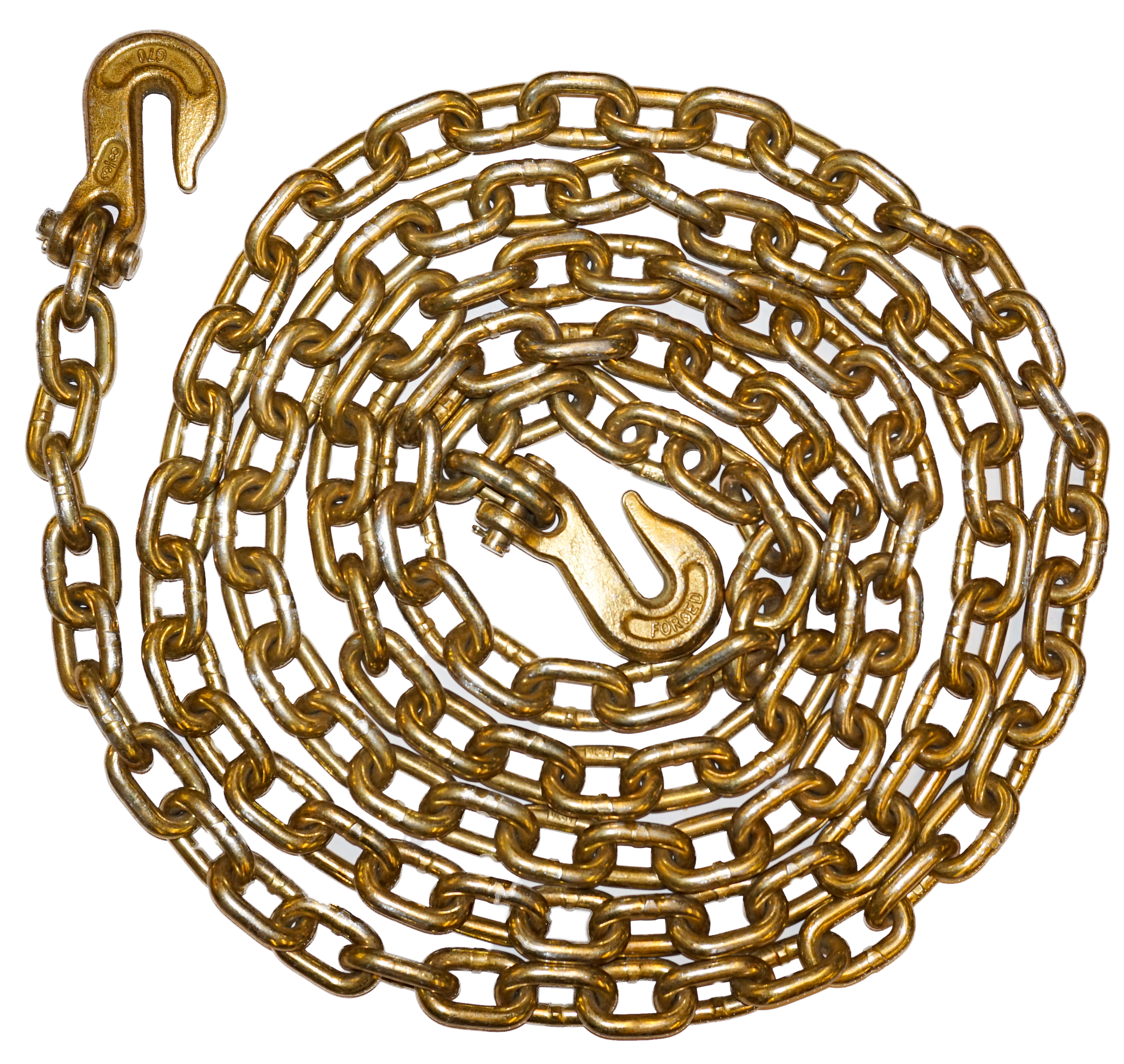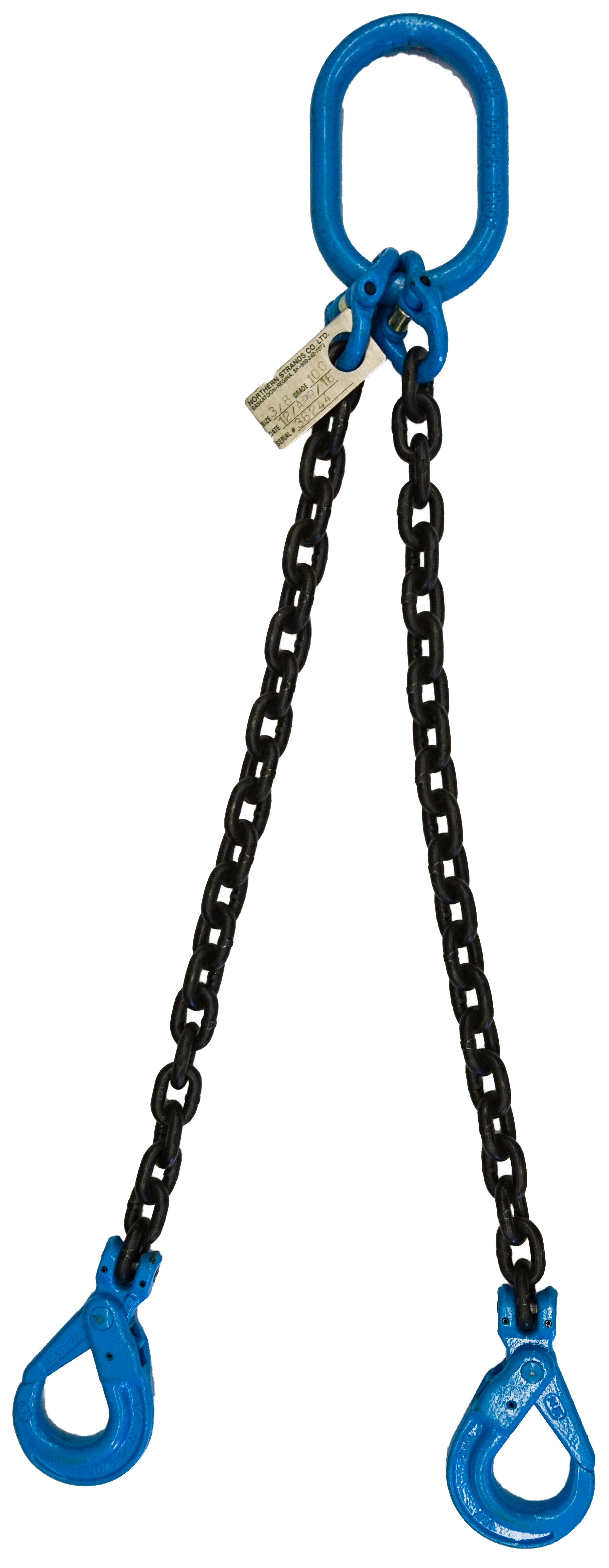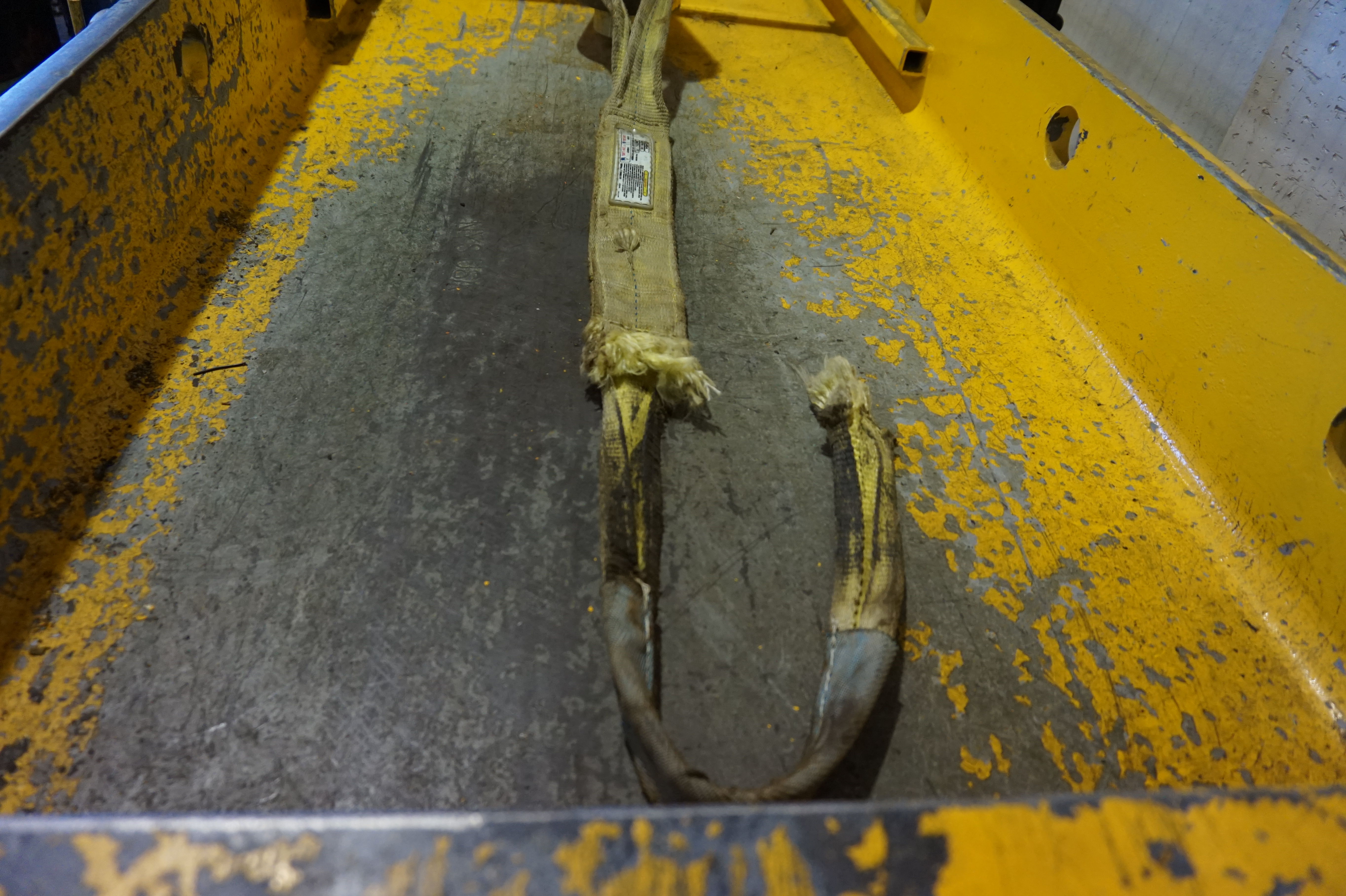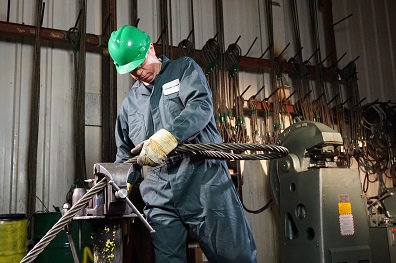Northern Strands, safety is one of our top priorities. Therefore, knowing how to properly clip wire rope using Crosby clips is very important in order to practice safe rigging. Keep in mind that the wire rope clip must be the correct size for the diameter of the rope that is being used and that there is a specific number of clips that are required according to rope size.
A quick rule of thumb for proper clip installation is, "Never Saddle a Dead Horse". This refers to the live end of the wire rope that rests in the saddle of the forged wire clip and the U-bolt that is placed on the dead end of the wire rope.
Here is the proper way to install Rope Clips as illustrated by the Crosby Group's 2015 General Catalog:
1. Turn back specified amount
of rope from thimble or loop. Apply first clip one base width from
dead end of rope. Apply U-Bolt over dead end of wire rope – live
end rests in saddle (Never saddle a dead horse!). Use torque
wrench to tighten nuts evenly, alternate from one nut to the other
until reaching the recommended torque.

2. When two clips are
required, apply the second
clip as near the loop or
thimble as possible. Use torque wrench to tighten nuts evenly,
alternating until reaching the recommended torque. When more
than two clips are required, apply the second clip as near the loop
or thimble as possible, turn nuts on second clip firmly, but do not
tighten.

3. When three or more clips are required, space additional clips
equally between first two
– take up rope slack – use
torque wrench to tighten nuts on each clip evenly, alternating from one nut to the other until
reaching recommended torque.

4. If a pulley (sheave) is
used in place of a thimble,
add one additional
Fist Grip. Fist Grip
spacing should be
as shown.

For more information on wire rope and wire rope clip installation, please contact us!
Northern Strands
306-242-7073
Email: info@northernstrands.com
Source: https://www.thecrosbygroup.com/catalog/
There are a number of important factors to consider when using chain to lift a given obstacle. Shiny, gold, Grade 70 Transport chain is intended for load binding only. This chain is used to hold heavy items down to a flatbed truck and the gold-chromate finish as well as the carbon-steel construction makes this chain easy to spot and more difficult to break.

With this said, this chain should not be used for lifting unless it has been fabricated by a sling manufacturer and the manufacturer is required to follow guidelines for fabrication. ASME and/or ASTM standards must be followed and they require that either grade 80 or 100 chain be used in sling fabrication, due to the alloy steel construction and its ability to elongate when overloaded as opposed to snapping suddenly. The manufacturer will also have to put a tag on the chain sling that indicates what maximum load or Working Load Limit can be safely applied to the sling, making it easier for end users to know the limitations.

When lifting any objects off of the ground, the weight of said object as well as the capacities of the lifting device and rigging must all be known before making the lift. This important guideline is something that the Northern Strands' Training Division focus on in the Below the Hook Rigging training. Sections 208 and 209 of the Saskatchewan’s Occupational Health and Safety Regulations refer to this concept directly as well.
When in doubt about whether to lift a load with a certain chain or not ask yourself this question: Does the chain have a tag on it indicating its Working Load Limit?
If yes – there are a number of other questions you should ask yourself after this to determine that all of the parameters related to the lift are safe.
If no – do not attempt the lift and look for an alternative solution.
When performing any sort of lift whatsoever, it is important that workers are trained in safe rigging practices and that they are competently supervised. Whether you are an employee or an employer, feel free to contact Northern Strands about our various Safety Courses and our Below the Hook Rigging Seminars.
For more information about Below the Hook Rigging Seminars click here: Hook Rigging Seminars
For more information about all Safety Training Courses click here: Safety Training Courses
Northern Strands Training Division Contact Information
Email: training@northernstrands.com
Phone: 306-242-7073
When conducting work site inspections, audits, or periodic rigging inspections, it is not uncommon to have to take anywhere from 80% -100% of the synthetic web slings out of service. There are a large variety of reasons a synthetic sling, “gets itself” into such a state of disrepair, but one thing that comes up from time to time when you ask a sling’s user why it is still on the rack in a clearly damaged state, a typical response might be:
“Oh, well you can’t see the red marker threads, so I thought they were still good…?”
Unbeknownst to some, many synthetic slings can be cut completely in twain and there will be no evidence of the aforementioned “red marker threads” whatsoever.
Backstory: some sling manufacturers would weave a different colored thread into the web sling material as a way to warn users of excess wear/abrasion/etc. The idea was that sling users would be able to more quickly identify a worn out sling by seeing the different colored thread.
So now we can see the issue that I have with this: the manufacturers added a feature to help sling users identify worn web slings and then sling users eventually turned it into a Go/No-Go gauge. This is made even worse by the fact that many, many slings do not have red marker threads of any kind. And even when slings do have them there can be many other reasons to take a synthetic sling out of service before they become visible.
If you’re noticing a trend like this on your worksite inspections follow this link http://www.northernstrands.com/training.aspx and we can discuss how the Northern Strands Below the Hook Rigging Training program could help you and/or your workforce learn where to draw the line and take slings and other rigging out of service before they become a hazard.
 Why does rigging need a safety factor?
Why does rigging need a safety factor?Have you wondered why rigging experts always suggest a sling that has a significantly higher breaking strength than the actual weight of the load you are lifting? The manufacturers know that the rigging used in overhead applications need to have room for error. This is known as the Safety Factor.
Northern Strands manufactures wire rope slings rated up to 36,000 lbs and sells round synthetic slings that are rated up to 140,000 lb capacity. This capacity is the Working Load Limit of the sling, which is the maximum amount of weight or force that the sling's user is allowed to put on the sling. Note: These slings do not break at the working load limit. These slings are designed with a safety factor of 5:1. This means that 5 times as much force as the working load limit has to be applied to the sling before it potentially fails. This means the wire rope slings have a Breaking Strength of up to 180,000 lbs and the round synthetic slings can withhold up to 700,000 lbs.
Why are these capacities reduced by such a drastic degree?
Among others, here are 3 good reasons:
- Shock Loading - Unexpected drops where the load can accelerate and then must be 'caught' by the slings.
- Wear - Working load limits are based on slings in brand new condition and a safety factor can help account for normal wear and tear until it is deemed unfit for further use.
- Uneven loading - Slings are made up of either wires or fibers that must all share the weight of the load evenly. If any situation arises where the sling is bent or wrapped around an object, there is potential that some of the wires or fibers will be taking on a greater share of the load than others.
Visit Northern Strands website to use the sling tension calculator. The Northern Strands Sling Calculator has been designed to assist you in selecting slings with enough load carrying capacity for your lifting applications. It is your responsibility to assure that the slings you use are appropriate for your application. http://www.northernstrands.com/sling-calculator.aspx
To inquire about Rigging and Safety Factors, contact:
Northern Strands @ 306-242-7073
or Email info@northernstrands.com

Northern Strands is proudly Saskatoon, Saskatchewan owned and operated.
This year Crosby Group has selected Northern Strands to host its famous Crosby Shrimp Boil and Rigging Training Seminar! For those unfamiliar with this event, Crosby Group provides a free rigging course followed by a shrimp boil where you eat jumbo prawns to your hearts content. Plus Northern Strands will be providing pull testing demonstrations on our mobile test bed and offering tours of our rigging warehouse facilities. Crosby selects only one Canadian Crosby rigging distributor annually to host this exclusive event. With Northern Strands being one of the top rigging companies in Saskatchewan, it was high time the Crosby Shrimp Boil made it's way back to Saskatchewan. In fact, this isn't the first time Northern Strands has hosted the Crosby Shrimp Boil. In years past, our Regina location hosted the event to great success.
The Northern Strands Shrimp Boil and Rigging Training event will take place Wednesday June 1st. If you are a company that uses rigging and would like your employees to receive free rigging training followed by a free shrimp boil, contact us today to see if we still have spots available. See the attached invitation for details...We have extended the RSVP date to May 20th. Email marketing@northernstrands.com if you are interested in attending.
Northern Strands Crosby Shrimp Boil Invite.pdf (827.73 kb)
Did you know that Northern Strands is the largest supplier of supplier of rigging and wire rope in Saskatchewan? We supply many of the local farmers, construction companies and potash mines in Saskatchewan with the following rigging supplies:
- Crosby shackles
- web slings
- round slings
- chain slings
- wire rope slings with special fitting (threaded studs, spelter sockets, swage sockets)
- turnbuckles
- wirelock
- spreader beams
- chain hoists
- lever hoists
- aircraft cable
- plate clamps
- beam clamps
- tow straps
- tow rope
- snatch blocks
- transport chain
- fall protection gear
- lifting hooks
- trifors
- grade 100 chain
- lifting lugs
- eyebolts & eye nuts
- wire rope lubricant
- grade 100 chain
- grade 30 and 43 Chain
And of course all Crosby Rigging products!
Northern Strands is proudly Saskatoon, Saskatchewan owned and operated.